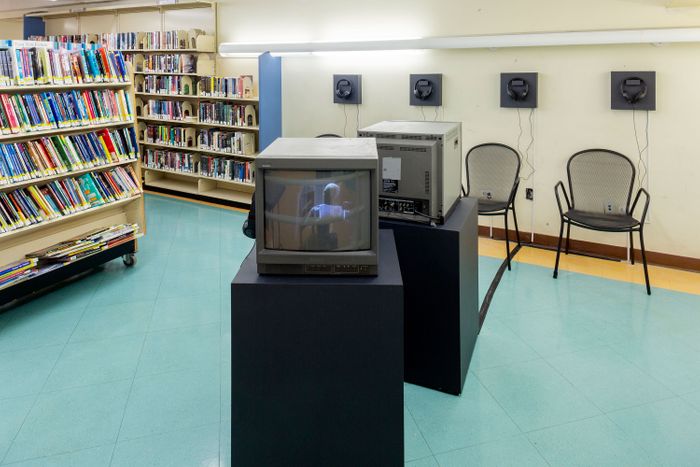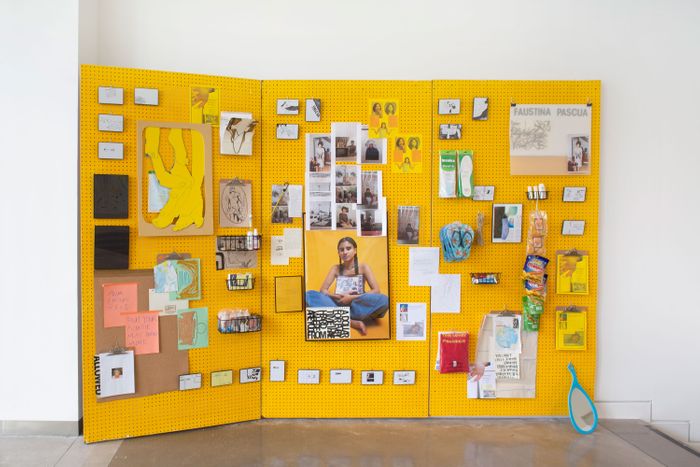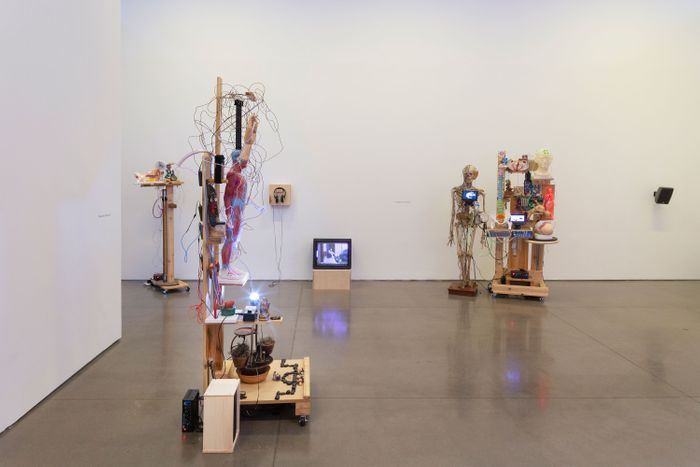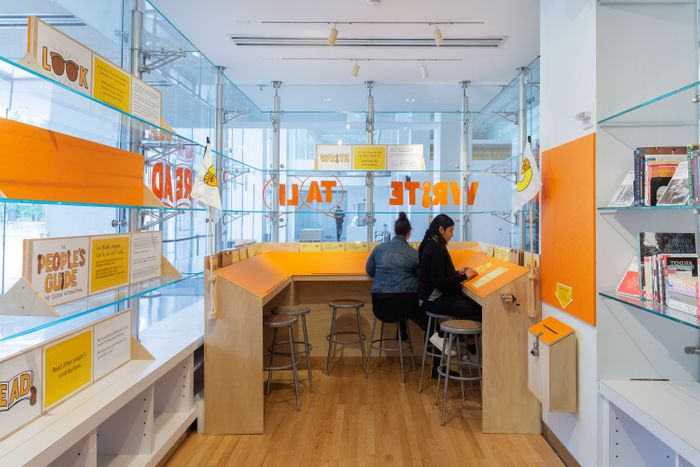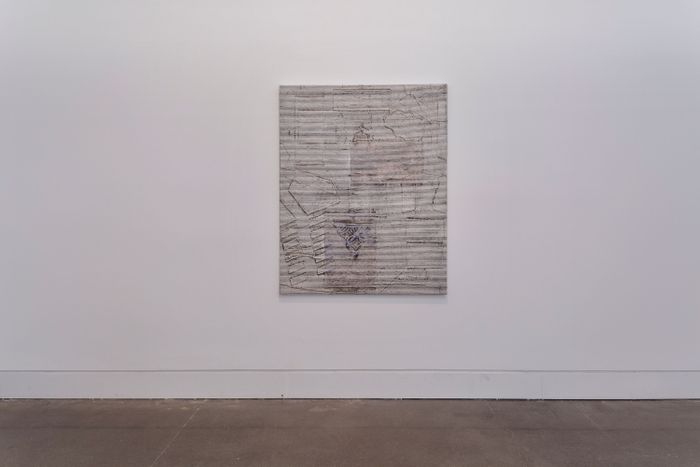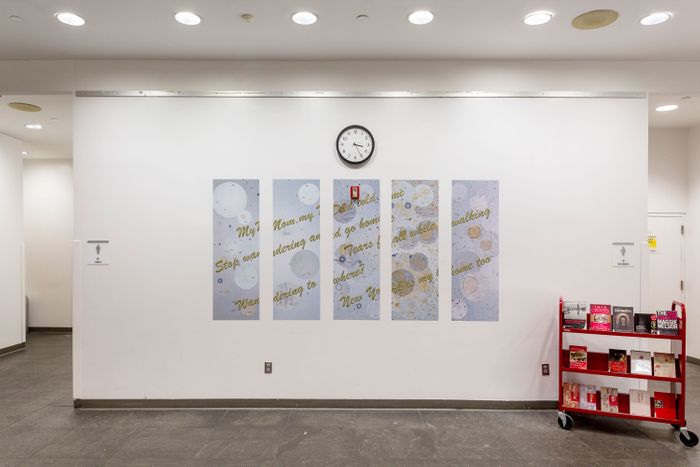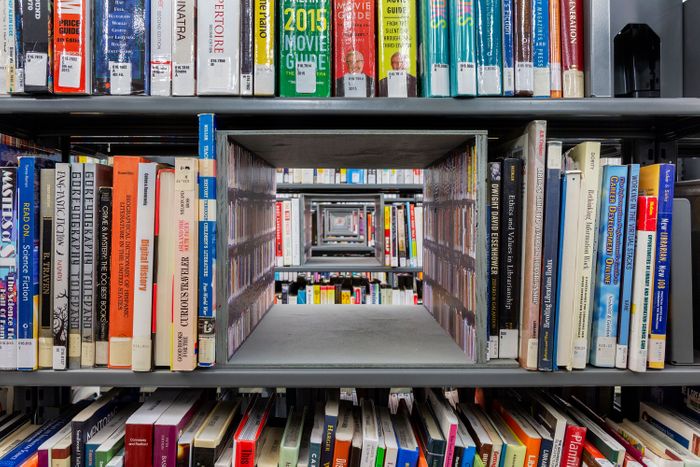
The Queens International is an art biennial distributed throughout the borough. Queens Museum assistant curator Sophia Marisa Lucas and her co-curator, artist Baseera Khan, joined forces to assemble 43 artists and collectives, from across 15 distinct neighborhoods, for the eighth edition. “Volumes” is co-hosted by select branches of the Queens Library, making it even more democratic. In this way, Queens is, itself, either by design or coincidence, very much on display — and with all the news about coming corporate-driven gentrification, it’s an opportunity to better understand the diverse, cross-generational patchwork of people from all over the world we stand to lose. Still, if you don’t live there, or only live in one part of the borough, it can be hard to find your way around, which is why we’ve made this art guide.
Queens Library at LeFrak City
Ambitious nine-to-fivers aiming to see it all should hit the circuit on a Saturday. The Queens Library at LeFrak City — just a short distance from the Woodhaven R train station — is closed on Sundays. Inside the library, a collaborative sound and video installation by artists Paolo Javier and David Mason (who also goes by the moniker “Listening Center”) meditates on the possibilities and limitations of language through the life and work of Filipino-American poet Fel Santos. The duo are having a poetry workshop on December 15.
Getting to your next destination, the Queens Museum, entails a brisk 20-minute walk east through the neighborhood of Corona. Grab an empanada for breakfast on the go.
Queens Museum
Directions to the Queens Museum are simple enough: Catch a Flushing-bound 7 train to Mets-Willets Point, follow these instructions, and get lost anyway (because you will). You’ll know you’re headed in the right direction when you see Gilmore D. Clarke’s Unisphere peaking up just above the trees. Really, it’s the only landmark you need.
First to greet you inside the museum is artist KT Pe Benito’s bright-yellow three-panel pegboard, a sort of Pilipinx altar, pinned with collages, photographs, and other objects memorializing the artist’s late grandmother Faustina. Up ahead, suspended from the building’s central ceiling, is a ceremonious if not unremarkable 100-foot-long tablecloth, meant to symbolize the communion of all the artists involved. Artist Mary A. Valverde’s nearby installation, Points + Curves, which features an intricate canopy of bent bamboo, would have been a better choice for such prominent placement.
The first exhibition gallery features the work of Jamaica, Queens–born polymath Milford Graves. The 77-year-old, best known for innovating free jazz percussion in the ’60s, says he’s drawing from his background in music and martial arts in this exploration of sculpture. Whimsical wooden assemblages display assortments of found objects: anatomical models, sculptures of mudra hands, copper wires, circuit boards, light fixatives, and other electronic equipment. The effect is schizophrenic, self-referential tableaux that hinge on the psychedelic. The artist’s prismatic approach, the curators explain in their catalogue, forms the foundational framework tying the entirety of “Volumes” together.
As you proceed through the galleries, be sure to pick up a copy of The People’s Guide to the Queens International placed throughout the Museum. The single-page forms were designed by artists Brian Droitcour and Christine Wong Yap to stimulate deeper encounters with the works on view. “Anyone,” they propose in the accompanying wall text, “can be an art critic!”
Perhaps the most seductive (if not politically salient) works on offer involve two participatory projects. Christina Freeman’s UltraViolet Archive is one of them. The interactive installation features a library bookshelf of “Challenged, Banned, and Obliterated” books (some familiar and others unexpected); a round table with chairs; and a single computer for curious visitors looking to explore the digital archive. Emilio Martinez Poppe’s End Credits for the Places That Make Us, meanwhile, includes a monitor, keyboard, and mouse. Found on the second floor, with two additional sets elsewhere on the ground level, the screen asks visitors to reflect on and engage with notions of placemaking, community, and belonging with preloaded prompts.
Another highlight is a grisailles painting called Omega by the late American painter Jack Whitten, which can be found in the second exhibition gallery. (The artist has a concurrent solo exhibition up right now at the Met Breuer.)
Queens Library at Flushing
Retrace your steps to the 7 train and take it one stop over to Flushing. Head south of the station to the Library’s entrance, and down the stairs to the lower level where you’ll find Mo Kang’s Black Cloud, Thin Ice prints. The exhibition, which uses Italian honey bees’ migrations to North America as a lens to examine globalization, registers like an elementary-school art show. Which, in fact, it is. Hanging on an adjacent wall are paper sculptures constructed by 5- to 9-year-olds each considering their own migration story. Try not to cry.
Queens Library Central
For the final stop on the tour, right across the street you can board a Jamaica-bound Q44 bus, which you’ll take to Merrick Boulevard. It’s about a 30-minute ride past the western edge of East Flushing, the residential stretch of Pomonok and Kew Gardens, and through the neighborhood of Briarwood, straight to the border of Jamaica and Jamaica Hills. Queens Library Central is three blocks north of the stop on Merrick. There, you’ll need a librarian’s help locating Patrick Killoran’s “Portals,” an optic tunnel of square-shaped viewfinders cutting straight through 18 library stacks. The piece is meant to allude to the act of “searching.” But the installation could also be interpreted as an absence, underscoring the idea of something that was and is now missing — kind of like 5Pointz or, maybe foreshadowing what many worry could disappear in Queens if Amazon moves in.
Bonus: Jackson Heights
Just north of the library is the 169th Street F station, the easiest way to get back to the city, or you can always take the train to Roosevelt Avenue for dinner in Jackson Heights, home to some of New York’s best Tibetan, Indian, Colombian, Mexican, and Uruguayan restaurants.


